


Deadly transformation
Junior Research Group Adaptive Pathogenicity-Strategies, Leibniz-Institute for Natural Product Research and Infection Biology – Hans Knöll Institute
Even though these two individuals of the yeast fungus Candida albicans look fantastic under the fluorescence microscope, they can become a deadly threat inside us humans. Especially when they are not recognized by our immune system and thus have the opportunity to spread freely. To evade the immune system, the fungi change their outside structure, known as cell wall. Dr. Mark Gresnigt visualizes the individual components of the cell wall, which can be seen here as green, red and blue colors. For example, he uncovered that the dyed β-glucan (green), which is detected particularly well by our immune system, is only present at the newly formed tip of the fungal filament. This finding could help us to understand how our immune defense can effectively recognize these fungi.
© Mark Gresnigt

Deadly transformation
Junior Research Group Adaptive Pathogenicity-Strategies, Leibniz-Institute for Natural Product Research and Infection Biology – Hans Knöll Institute
Even though these two individuals of the yeast fungus Candida albicans look fantastic under the fluorescence microscope, they can become a deadly threat inside us humans. Especially when they are not recognized by our immune system and thus have the opportunity to spread freely. To evade the immune system, the fungi change their outside structure, known as cell wall. Dr. Mark Gresnigt visualizes the individual components of the cell wall, which can be seen here as green, red and blue colors. For example, he uncovered that the dyed β-glucan (green), which is detected particularly well by our immune system, is only present at the newly formed tip of the fungal filament. This finding could help us to understand how our immune defense can effectively recognize these fungi.
© Mark Gresnigt